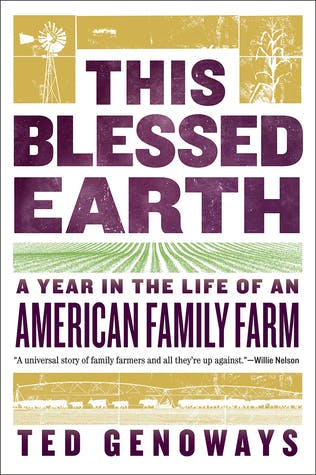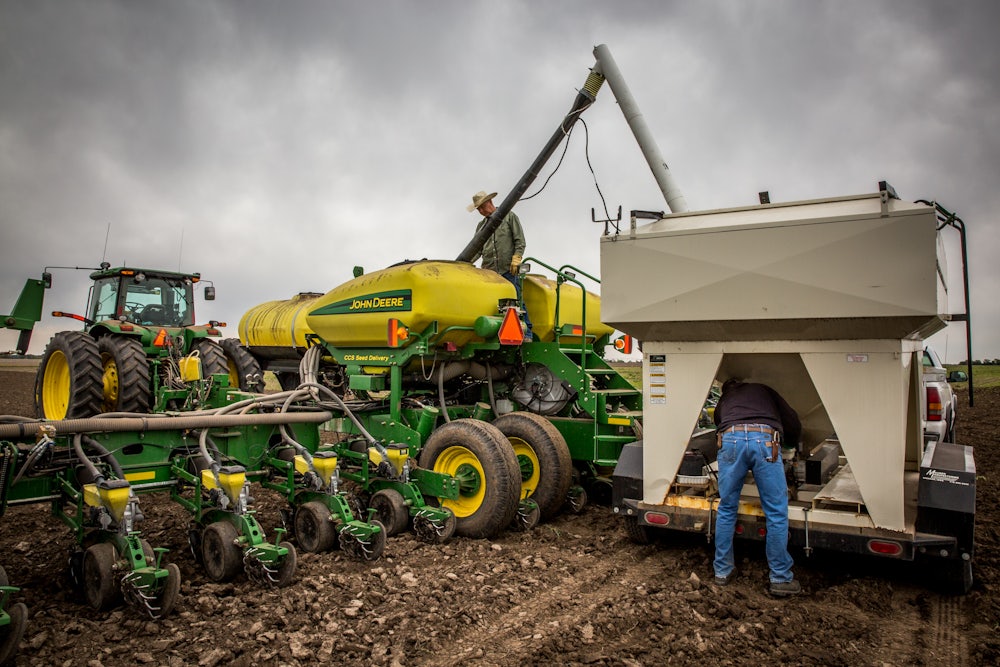Perhaps the greatest fiction of the Donald Trump era is that of his skill at closing deals. Put aside the dubious victories of his early days in New York and Atlantic City, where he proved uncannily good at saving his own financial skin at the expense anyone who worked for him or partnered with him. These were mere preamble to his far move eventful inability to get things done as president.

In recent years, American agricultural yields have grown so large that farmers have had to open new markets, particularly for surplus grains, and especially in Asia. Now, after Donald Trump has canceled the Trans-Pacific Partnership, and as he threatens to end the Free Trade Agreement with South Korea or halt all trade with China if its government doesn’t exert more pressure on North Korea, the farmers who voted for Trump, by a margin of nearly 3-1, must consider what his trade policy means for their future. This excerpt from This Blessed Earth, the just-published book by New Republic contributing editor Ted Genoways, chronicles life in a Nebraska farming family trying to negotiate the new reality, and get their crop in on time.
Rick Hammond, a fifth generation farmer in western Nebraska, held off on planting soybeans through most of May. He had chosen to go with a short-season variety again and didn’t want to get them in too early, risking another wet fall and another late harvest—especially with what he was seeing in the commodity markets. Hammond had spent the winter emptying his bins as slowly as possible, keeping back reserves, waiting. There’s typically a spring bump in prices, what’s called a “seasonal rally,” at the start of planting when stockpiles are at their absolute lows and the results of the South American harvest start to come in. “Eight out of ten years, you’ll see it,” Hammond said. “But then a couple of weeks ago, we had a report come out that made everything go the other way. The U.S. had had a big bean crop, and then South America had a fantastic year.” Instead of the usual spring bump, prices had actually fallen further on the news. Hammond decided to sell off what he had left—about 5 percent of his overall corn crop and fully 25 percent of his soybeans, grain he had been storing for more than six months. It was time to cut losses and hope for a better year ahead. “Maybe I sold on the low,” he said. “But I just didn’t see upside anytime soon.”
So Hammond cleared out the last of his bins, hauled the final semi loads to the elevator, and started picking up new seeds from the dealer. But by the time he had gotten the John Deere planter loaded on the flatbed and brought over from the seed corn fields, a line of spring storms had rolled in, blanketing the sky for days. By then, there was nothing to do but put his seeds in as the weather allowed, one field at a time. On the day Hammond was ready to move, the clouds were stacking up, billowy and roiling. They kept threatening big rain but never produced more than a light mist, so he planted half of the field he’d selected with one variety, and when the weather seemed like it would hold for a few more hours, he hitched up the seed tender, a portable tank that looked like a miniature water tower on wheels, and headed to the seed dealer to get a second variety to finish the field.
As we drove, Rick explained that his Pioneer dealer offered 38 varieties of soybeans. Almost all of them were genetically modified by bioengineers, inserting strands of DNA that make the plants able to withstand a range of herbicides, particularly the compound glyphosate. Chemist John E. Franz, working for the St. Louis-based chemical giant Monsanto, first hit upon glyphosate in 1970 as part of a company-wide search for potent chemicals that could be sold as weed-killer. Brought to market four years later under the trade name Roundup, the broad-spectrum herbicide saw unmatched growth in the agricultural industry, where it was used for broadleaf weed control. The only problem with Roundup was that it proved so potent that farmers had to apply it carefully, spraying only early weeds, before their corn or soybeans had begun to sprout. Otherwise, it would kill the entire crop.
From Monsanto’s standpoint this presented a serious problem. Simply put, the necessity of limiting Roundup’s application also limited its sales. So company researchers started the search for ways of engineering crops that could withstand this new weed-killer. Today, there’s a genetically modified variety for almost any soybean need. One modification causes the plant to create a protein that kills insects; another changes the profile of the fatty acids in the beans, making them less susceptible to rot after harvesting. The Soybeans Seed Guide breaks down the performance of each product, all sold under codenames like P22T41R2 and 93Y41, into extremely fine categories: whether they are resistant to particular races of soybean cyst nematodes, to the Phytophthora infections that cause root rot, or to white mold that can cause stem rot; how quickly they emerge, how tall they grow, how wide they canopy; what their protein and oil percentages will be at optimum 13 percent moisture rates at harvest.
The precision is stunning, and the knowledge demanded of farmers, most of whom consult with agronomists but ultimately decide what to plant on their own, seems impossible to fathom—but also impossible to escape. A quarter of a century ago, Roundup Ready crops didn’t exist; today, they are 90 percent of the soybean market and nearly three-quarters of the corn and rice markets. And on the strength of that success, Monsanto and DuPont Pioneer have grown into global seed giants, now controlling 45 percent of all the seed sold in the world. Short of going completely organic and dropping out of growing commodity grains, how is a farmer supposed to avoid raising corn and soybeans that have been genetically modified to withstand Roundup?
As he approached the dealership, North Forty Seed, Hammond put on his hazards, pulled past the end of the driveway, and then backed the trailer straight onto the concrete pad next to the seed warehouse. As Rick swung his driver’s door open, Dennis Stevens was there to greet him.
Stevens wore his Pioneer cap low, and his snowy mustache nearly covered his grin. “Well, if it isn’t the local liberal,” he said.
Hammond adjusted his cowboy hat as he stepped out the cab. “If it isn’t the local son of a bitch,” he replied. The two men smiled broadly and shook hands.
Stevens walked us over to the pro boxes, stacked like oversized milk crates all the way to the rafters, each labeled with its particular product code but also its place of origin, the date it was field-tested, any preapplied treatments used, and the exact number of seeds in the box. Stevens double-checked which product Hammond was picking up with this load, and then gave the signal to the forklift operator to pick up a box full of soybeans and hoist it high over Hammond’s seed tender. The pro boxes have a trap door on the bottom that, when opened, lets the seeds pour out like sand in an hourglass. The forklift revved and beeped as the operator moved it precisely into place. Hammond climbed the side of the tender and yanked on the sliding door, sending the seeds echoing into the empty tank. When every seed had drained out, Hammond banged hard on the door to slide it back into place, but it wouldn’t budge.
“Do you need a hammer?” Stevens called.
Hammond gave him a quick, dismissive smile, then pushed on the door again, putting his shoulder into this time. It slid into place with a resounding clang. “That ought to do it,” he said.
Before long, we were racketing back over the washboard roads, the heavy tender bouncing and tugging against the hitch. Given everything, Hammond seemed oddly ebullient—drumming his thumbs on the steering wheel, whistling a little despite a few raindrops blossoming on the windshield. “I usually have about fifty percent of my beans forward-contracted by now, and this year, I have none,” he said. He had decided to take an even bigger gamble than the year before, banking on prices going up before harvest. It was an undeniable risk, but after all winter worrying, he was happy to finally be getting back to work, doing something instead of just waiting.
At the field edge, Hammond pulled alongside the hopper at the back of the planter. Dave Perdue, Hammond’s longtime hired worker, fired up the auger, powered by a small diesel engine underneath that started with a pull cord like a lawnmower, and then his father, climbing a ladder to the hatch door on top of the main hopper, directed the corrugated plastic hose inside, spreading the seeds out layer after layer. Besides their many genetic modifications, the candy-bright seeds, like a barrel of green M&Ms, had been treated with a mix of insecticides and fungicides similar to those used on the seed corn. Hammond wore a plaid flannel shirt buttoned at the wrists and thick rubber gloves as protection. All the while, he kept eying the sky. “I’m afraid we’re going to get everything loaded up just in time for it to rain,” he shouted.
The prospect of rain was concerning, not only because the planter can mire and get stuck in a muddy field. Even a light rain can affect seed depth for each furrow, forcing the farmer to constantly recalibrate and double-check the planter to keep from wasting seeds. Hammond often recalls the spring, not long after he’d started working with Heidi, his wife, that he planted too deep and nothing sprouted, so he replanted but too shallow and a spring rain washed everything away, so he replanted again, by then needing a perfect season just to make up for the lost investment in seed. Hammond always wore a mustache up until then, but that year, the worry turned his facial hair snow white. In the end, he broke even for that year, but he’s been clean-shaven and a bit more mindful of his seed depth ever since.
Perdue climbed into the cab of the tractor and started the onboard computer. The fan pressurizing the planting system came to life again. A big chemical tank to one side of the planting attachment made it so that PErdue could apply additional fungicide, insecticide, or fertilizer right as the seeds came out of the bulk bin. He pulled the planter parallel with the last completed rows, lowered the planting blades, and started again across the field. For the moment at least, they had beaten the rain.
“They say farmers are the world’s biggest optimists,” Hammond said, watching Perdue go. “You have to be optimistic in this business, just to keep going—or at least have an awful short memory.”
